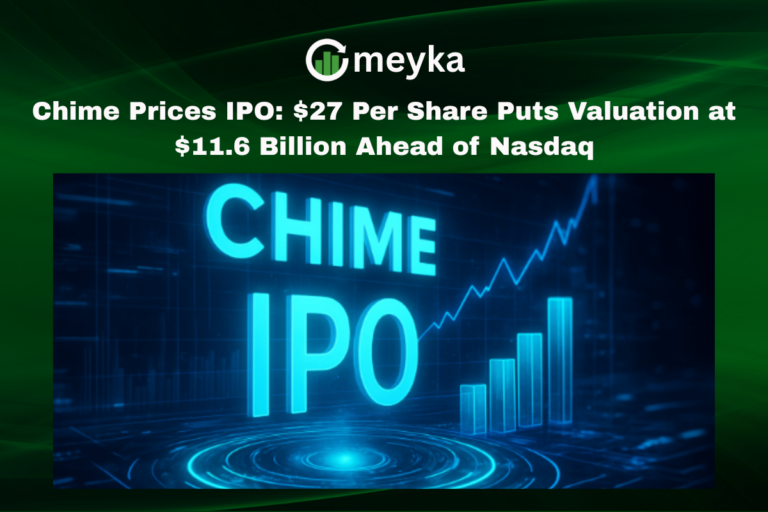Coinbase Holds Strong Lead in U.S. Crypto Market Despite Rising Rivals
Coinbase continues to dominate the U.S. cryptocurrency market, maintaining its leadership despite increasing competition from both local and international rivals. As the largest regulated crypto exchange in the country, Coinbase’s consistent user base, regulatory compliance, and expanding product suite have helped it stay resilient even as the market shifts rapidly.
According to recent industry data, Coinbase handles nearly 55% of total U.S. crypto trading volume, a position it has held for several years. Even with competitors like Binance.US, Kraken, and Robinhood entering the space, the company’s deep liquidity and reputation for trust continue to attract both retail and institutional investors.
Coinbase’s Position in a Competitive Market
In an environment defined by volatility, regulation, and fast-paced innovation, Coinbase’s ability to hold ground stands out. The firm’s U.S. focus, combined with strict adherence to compliance frameworks, gives it a significant edge. While global exchanges often face restrictions, Coinbase benefits from its clear legal standing and its registration with American regulators such as the U.S. Securities and Exchange Commission (SEC) and the Financial Crimes Enforcement Network (FinCEN).
This adherence has allowed Coinbase to keep operating even when several foreign-based exchanges faced crackdowns. For investors doing stock research, this regulatory consistency provides stability, an increasingly rare quality in the stock market and crypto world alike.
Rivals Are Growing — But Coinbase Still Leads
While Coinbase remains the market leader, rivals are rapidly expanding. Exchanges such as Kraken, Gemini, and Robinhood Crypto are gaining traction with lower fees and user-friendly mobile apps. Meanwhile, Binance.US continues to fight regulatory challenges but still manages to attract active traders with its wide selection of digital assets.
Despite this, Coinbase continues to hold its lead due to three major factors:
- Brand Trust and Security – Founded in 2012, Coinbase built its brand on safety and compliance. Its custodial services and insurance coverage reassure cautious investors.
- Institutional Partnerships – Coinbase Prime serves high-volume institutional clients, including hedge funds and financial advisors, further deepening liquidity.
- Product Ecosystem – Beyond trading, Coinbase has diversified into staking, derivatives, and blockchain infrastructure through Base, its Ethereum Layer-2 network.
This layered approach has enabled Coinbase to build not just a trading platform but a full crypto ecosystem.
Financial Performance and Stock Outlook
As of October 2025, Coinbase Global Inc. (NASDAQ: COIN) continues to show signs of steady performance. The company’s latest quarterly report showed $1.8 billion in revenue, largely supported by transaction fees and blockchain infrastructure services.
Even with price fluctuations in Bitcoin and Ethereum, Coinbase’s revenue base has diversified. The company’s recurring revenue, from subscription services, staking, and cloud partnerships, now makes up over 35% of total income, according to Coinbase’s Q3 2025 financial filing.
For investors tracking AI stocks and blockchain technologies, Coinbase’s growth trajectory mirrors the broader digital asset adoption trend. While AI and crypto serve different markets, they share common ground in data, decentralization, and automation, attracting similar investor interest across the stock market.
Regulatory Landscape: A Blessing and a Challenge
Coinbase’s U.S.-based operations give it credibility, but also expose it to stricter regulatory oversight. The company continues to navigate ongoing discussions with the SEC over whether certain crypto tokens qualify as securities.
Recently, Coinbase CEO Brian Armstrong emphasized that the company is “prepared to take the long road toward clear crypto regulation.” This proactive stance positions Coinbase as a cooperative industry leader, unlike several peers that have faced enforcement actions.
However, the path forward remains complex. A tighter regulatory framework may limit token offerings or increase operational costs, but it could also drive institutional adoption, something that benefits regulated exchanges like Coinbase in the long term.
Adapting to New Market Trends
Coinbase’s strategy has evolved beyond basic trading services. Its recent initiatives show that it’s adapting to future trends in Web3 and AI-driven financial infrastructure:
- Base Network: A Layer-2 blockchain designed to lower fees and improve scalability for decentralized applications (dApps).
- Wallet Expansion: Enhanced security and interoperability features in Coinbase Wallet make it easier for users to manage assets across blockchains.
- AI Integration: Coinbase has begun exploring AI tools for fraud detection, customer support, and risk management, showing its commitment to advanced analytics and automation.
These expansions give Coinbase multiple revenue streams and a long-term technological moat.
Market Perception and Investor Confidence
From a stock research perspective, analysts remain cautiously optimistic. While Coinbase’s share price has fluctuated due to broader crypto volatility, its fundamentals, customer trust, compliance, and innovation remain solid.
Wall Street firms such as J.P. Morgan and Wedbush have maintained “Neutral” to “Outperform” ratings, citing Coinbase’s dominance in the U.S. crypto market and potential growth from new services.
In the stock market, Coinbase acts as a barometer for digital asset sentiment. When Bitcoin rises, Coinbase typically benefits from higher trading volumes. Conversely, during downturns, its subscription and staking revenues provide a cushion.
Challenges Ahead
Despite its leadership, Coinbase faces several challenges:
- Fee Pressure: Competitors with lower trading fees could erode market share.
- Global Expansion: Coinbase still lags in certain international markets compared to Binance and OKX.
- Regulatory Uncertainty: Any unfavorable SEC ruling could impact operations or limit its product range.
- Crypto Volatility: Sharp declines in crypto prices often lead to reduced trading activity, directly affecting revenues.
Nevertheless, Coinbase’s diversified model gives it more resilience than many smaller exchanges.
Conclusion
Coinbase continues to prove its dominance in the U.S. crypto market, even amid growing competition and regulatory hurdles. Its focus on compliance, product innovation, and institutional partnerships sets it apart in an increasingly crowded field.
For investors tracking AI stocks, stock research, or broader stock market trends, Coinbase represents a hybrid opportunity, combining the reliability of a regulated financial platform with the innovation of blockchain technology. As the digital asset ecosystem matures, Coinbase’s early investments in infrastructure and security may continue to pay off well into the future.
FAQs
Coinbase’s leadership is built on regulatory compliance, security, and trust. Its user-friendly interface and diverse services, including trading, staking, and custody, keep it ahead of competitors.
Coinbase uses AI for fraud detection, customer service, and risk management. It also supports blockchain growth through its Base Layer-2 network and Web3 wallet.
Coinbase remains a strong player in the crypto sector. While its performance depends on overall market conditions, its diversification and leadership position make it a key company for investors watching crypto-related and tech-driven stock market trends.
Disclaimer:
The content shared by Meyka AI PTY LTD is solely for research and informational purposes. Meyka is not a financial advisory service, and the information provided should not be considered investment or trading advice.






